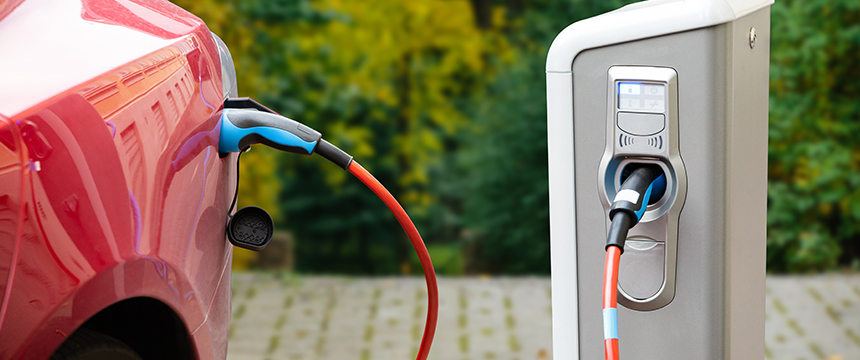New Rules for the EV Tax Credit under the Inflation Reduction Act
Auto Trends Series: Article 2

The Internal Revenue Service (IRS) recently released guidance1 regarding the changes to the Plug-In Electric Drive Vehicle Credit (EV Credit) under Section 30D2 of the Internal Revenue Code (Code), which was most recently amended under the Inflation Reduction Act of 2022 (IRA). The EV Credit itself is not new; it was originally enacted in the Energy Improvement and Extension Act of 2008, as amended by the American Recovery and Reinvestment Act of 2009. In that historical incarnation, the EV Credit was available for plug-in electric vehicles at a rate of up to $7,500 per vehicle, but subject to a volume cap of 200,000 units per manufacturer.
The good news for manufacturers and consumers with the IRA amendments to the EV Credit is that this cap has been eliminated, making vehicles produced by manufacturers that have already hit the cap potentially eligible for the EV Credit again. Depending on your vantage point in the automotive industry, that is potentially where the good news ends.
The IRA Imposed Changes to EV Credit Qualifications
As amended by the IRA, for vehicles placed in service after December 31, 2022 and before January 1, 20333, the amount of the EV Credit for a qualifying electric vehicle (EV) is up to $7,500, subject to a requirement that the EV undergoes “final assembly” in North America (i.e. the United States, Canada, or Mexico). The Code defines “final assembly” as “the process by which a manufacturer produces a new clean vehicle at, or through the use of, a plant, factory, or other place from which the vehicle is delivered to a dealer or importer with all component parts necessary for the mechanical operation of the vehicle included with the vehicle, whether or not the component parts are permanently installed in or on the vehicle.” The build location of a vehicle can be confirmed using its Vehicle Identification Number (VIN) on the U.S. Department of Energy website.
Beginning on January 1, 2023, other qualifications for a “new clean vehicle” to be eligible for the EV Credit include:
- The original use of the motor vehicle must commence with the taxpayer.
- The motor vehicle must be acquired for use or lease by the taxpayer and not for resale.
- The motor vehicle must be made by a “qualified manufacturer.”4
- The motor vehicle must be treated as a motor vehicle for purposes of Title II of the Clean Air Act.
- The motor vehicle must have a gross vehicle weight rating of less than 14,000 pounds.
- The motor vehicle must be propelled to a significant extent by an electric motor that draws electricity from a battery that has a capacity of not less than 7 kilowatt hours and is capable of being recharged from an external source of electricity.5
- The final assembly of the motor vehicle must occur within North America, which for this purpose means the United States, Canada, and Mexico.6
- The person who sells any vehicle to the taxpayer must furnish a report to the taxpayer and to the Secretary of the Treasury, including the following information:7
- The name and taxpayer identification number of the taxpayer;
- The VIN of the vehicle;
- The battery capacity of the vehicle;
- Verification that original use of the vehicle commences with the taxpayer;
- The maximum credit under Section 30D of the Code allowable to a taxpayer with respect to the vehicle; and
- In the case of a taxpayer who makes an election to transfer the credit to an eligible entity under Section 30D(g)(1) of the Code, any amount described in Section 30D(g)(2)(C) of the Code that has been provided to such taxpayer.8
In addition to these requirements, the EV Credit now mandates minimum sourcing thresholds for critical minerals and components of the EV batteries. These requirements apply after the IRS releases guidance on how to satisfy them and generally have not been received without controversy in the industry, which we addressed previously in Battle Lines Drawn on Electric Vehicle Tax Credit Specifics. The implications of these requirements is that many popular EV models may not be eligible for the new EV Credit without an exception or waiver—or an amendment to the EV Credit itself. As we have noted, however, there is currently no indication of willingness in Washington to modify these restrictive elements of the EV Credit.9
On top of these manufacturing restrictions, the IRA included additional eligibility qualifications on the individual taxpayer. Specifically, to be eligible for the EV Credit, qualifying natural person taxpayers cannot have a modified adjusted gross income of more than $150,000 for individuals and $300,000 for couples filing jointly. Further, the MSRP for eligible EVs must be less than $80,000 for SUVs, vans, and pickup trucks and $55,000 for sedans and all other vehicles. These eligibility thresholds reflect a policy decision by the IRA lawmakers to target the EV Credit at low- to middle-income taxpayers.10
Conclusion
It will, of course, take time to see what the impacts the new EV Credit will have on EV adoption around the country. The IRA made clear, however, that Washington is hoping that the EV credit—and other market and policy forces more broadly—will lead to mass EV adoption. Mass adoption will necessarily require significant investment in our charging infrastructure nationwide, which the IRA—as well as the Bipartisan Infrastructure Law of 2021—anticipated through yet further government incentives and subsidies. For more information about those initiatives, see EV Charging Station Tax Credits are Back: Inflation Reduction Act Extension of the Section 30C Tax Credit and U.S. DOT Releases NEVI Formula Program Guidance, Giving Public and Private Stakeholders a Roadmap for EV Infrastructure Funding.
We will monitor continued developments in the EV and EV infrastructure industries, and are available to help clients navigate this evolving landscape.
Subscribe to the Auto Trends 2023 Series
For an ongoing discussion of where the industry is going, we invite you to subscribe to this Auto Trends 2023 Series by clicking here.
2 The clean vehicle fleet credit under Section 45W of the Code and the used clean vehicle credit under Section 25E of the Code are beyond the scope of this summary.
3 Note that somewhat different requirements pertaining to EV Credits applied for the periods before passage of the IRA and in the interim period between passage of the IRA and the provisions that went into effect on January 1, 2023.
4 Rev. Proc. 2022-42 provides guidance for manufacturers to be considered “qualified manufacturers” for purposes of Sections 30D, 45W, and 25E of the Code, including that the manufacturer must enter into and submit a written agreement to the IRS and file monthly reports providing VINs and other information establishing which vehicles manufactured by such manufacturer are eligible for EV Credits.
5 This is an increase from the previous capacity requirement of 4 kilowatt hours.
6 As mentioned above, this is a new requirement since the passage of the IRA.
7 Sellers must provide a report to each purchaser of a qualified EV at the time of purchase and also must file the report with the IRS within fifteen days after the end of the calendar year. Thus, the first report to the IRS must be filed by Sellers in January of 2024. That report must contain information such as the tax ID numbers of the seller and purchaser, the VIN, the battery capacity, the date of sale, the price, and the maximum credit allowable with respect to the vehicle, among other things.
8 Transfers of the EV Credit are permissible to an eligible entity under Section 30D(g)(1) of the Code beginning on January 1, 2024.
9 The U.S. Department of the Treasury and the IRS are expected to release guidance regarding the critical mineral and battery component requirements early in 2023.
10 See Tax Credits in the Inflation Reduction Act Aim to Build a More Equitable EV Market for an overview of these qualifications.



